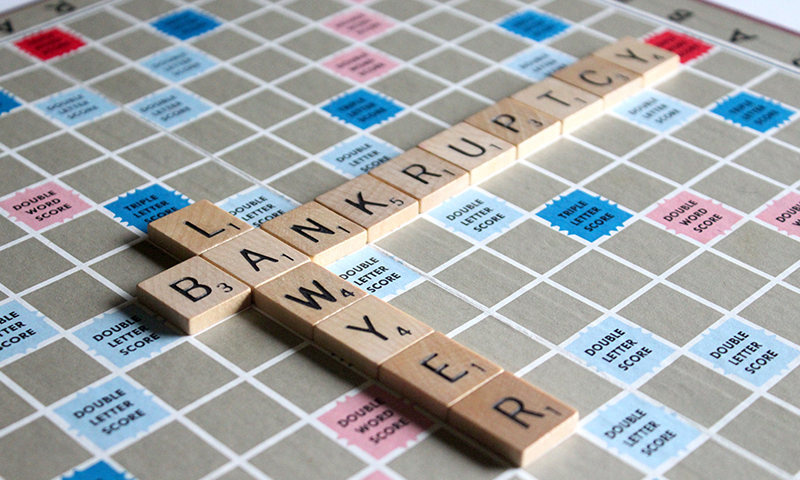Bankruptcy is a legal term for when a business or person is unable to repay their outstanding debts. The goal behind this is to give people a second chance and to help them start fresh.
Bankruptcy is typically seen as a “last solution” that is normally associated with failing businesses that are forced to shut down. It has, however, has become more common because of the need to increase debt to survive.
There are three different types of Bankruptcy:
Chapter 7 Bankruptcy
In exchange for clearing qualifying debt, you must agree to take and liquidate some of your property to pay back the outstanding debt. However, there are pieces of exempt property that are protected under state law.
This type of bankruptcy will give you a brand-new start because you’ll get many debts – including, medical bills, personal loans, and credit card balances – wiped clean without having to repay anything. However, it won’t get rid of all of your debt. Some debts remain after your file for bankruptcy until you pay them off. Some examples include child support, income taxes, and student loan debt.
Chapter 11 Bankruptcy
Chapter 11, bankruptcy is primarily known as an option for businesses. With Chapter 11, businesses can restructure their debts and potentially save themselves from having to go out of business – this happened during the Sears bankruptcy. When a business files for Chapter 11, they will still have the same responsibilities of operating a business but will also have to work with a trustee to plan for the reorganization of their debts.
Most businesses will shy away from Chapter 11 bankruptcy because it’s risky, expensive, complex, and time-consuming.
Chapter 13 Bankruptcy
This type of bankruptcy reorganizes debt for individuals. Although you get to keep your property, you have to pay back creditors the value of any nonexempt assets as part of a three- to five-year Chapter 13 bankruptcy payment plan as well as any additional discretionary income.
To be eligible for this type of bankruptcy, you need to have a reliable source of income to repay a portion of your debt.
How Much Does It Cost to File Bankruptcy?
Bankruptcy is not a cheap option, and you probably won’t find any assistance when it comes to paying off it off.
Each type of bankruptcy comes with a different filing fee – for instance, $335 for Chapter 7. Then you’ll also have your credit counseling fee, which can cost around $50 to start, and then you’ll have your overall legal fees which can cost thousands of dollars. You will then also have to pay for your debtor education course; this can range from $50 to $100.
With all of this in mind, bankruptcy can range from a few hundred dollars to a few thousand dollars depending on what you’re filing and if you use a bankruptcy lawyer or not.
Filing for Bankruptcy
The first thing that you need to do before filing for bankruptcy is to figure out if it’s the right thing for you to do. It’s a big undertaking, so you have to ask yourself, “Should I file for bankruptcy?”
There are several other questions that you can ask yourself to make sure that you’re making the right call, including: “How long will I have to repay my debts for? Am I seriously unable to make the payments? Am I able to gather all necessary documents and information? Does the existing debt outweigh the consequences?
Filers of bankruptcy will want to find a bankruptcy lawyer. While you can file for certain types of bankruptcy without one, it’s likely that you’ll be financially vulnerable. So, finding someone who understands bankruptcy can help guide you through the various intricacies of filing.
What Happens When You File for Bankruptcy?
After filing for bankruptcy, you get put on an “automatic stay.” An automatic stay puts a block on your debt to prevent creditors from trying to collect on the debt. While the stay in place, they aren’t able to take money out of your bank account, take money out of your paychecks, or go after any of your secured assets.
You will also have to attenda couple of classes. You are required by the government to attend credit counseling 180 days before you file for bankruptcy, and then you’ll need to attend a debtor education class after if you want your debts to be discharged.
A couple of weeks after filling, you have to go to a “creditors meeting,” which is a U.S. bankruptcy court meeting where you, any creditors and your trustee get together to discuss the situation. During this meeting, you’ll be asked questions about your financial situation and decision to file bankruptcy.
Then your assets are liquidated if you’re filing Chapter 7, you get a repayment plan with Chapter 13, and the “Best Interests Test” for Chapter 11.
Your Credit After Bankruptcy
In general, your credit will plummet after bankruptcy, and the higher your score, the more it’ll fall. So, how long does bankruptcy stay on your credit report? It depends on which type of bankruptcy you’re filing. Chapter 7 and 11 stays on your credit score for ten years, and Chapter 13 can stay on it for seven.
To rebuild your credit after bankruptcy, you might want to consider credit cards. Opening credit cards after bankruptcy is a great way rebuild your credit score; this will give you a second chance to rebuild your credit and show that you’re able to take on credit after everything that has happened.
The best type of credit card to go with is a secured card. Remember that you will probably be denied credit cards until your bankruptcy has been cleared from your credit report – even for a secured card, however, there are some cases where you’ll be able to get a credit card before your bankruptcy is discharged.
Keep in mind that any credit cards that you get post-bankruptcy will be limited and will require high annual percentage rates and annual fees.
